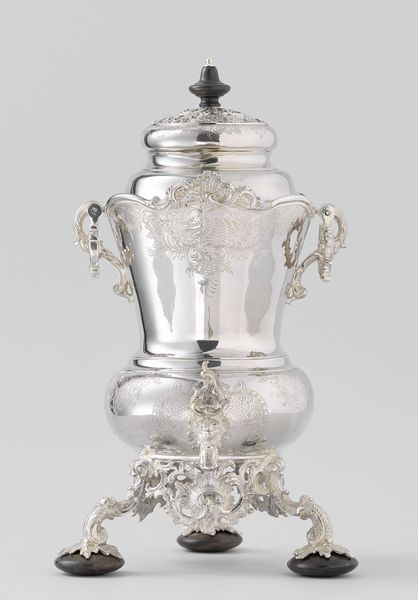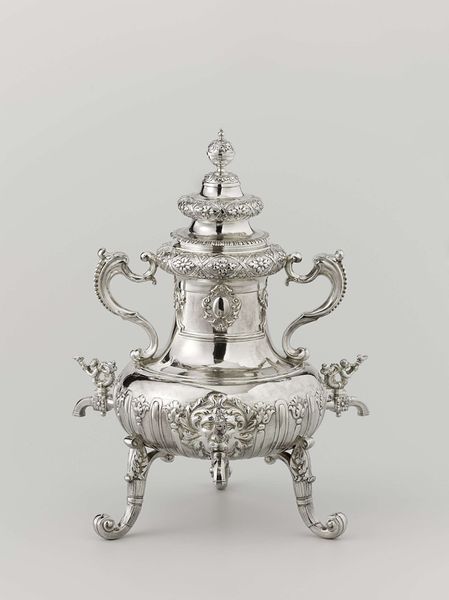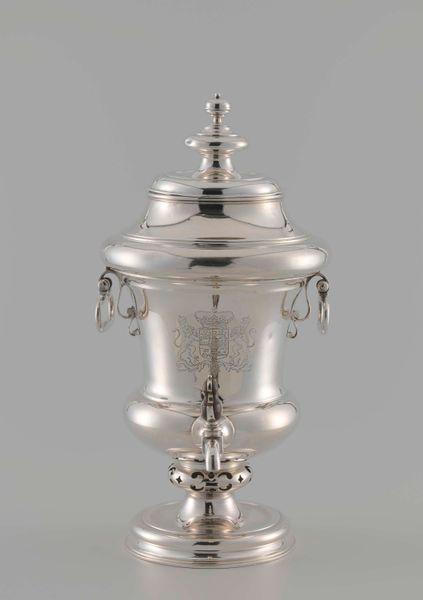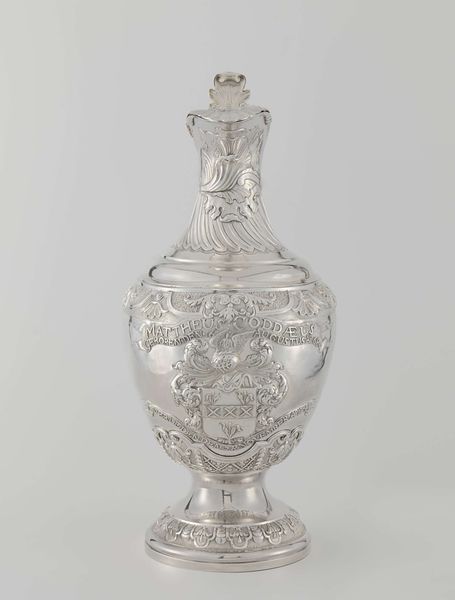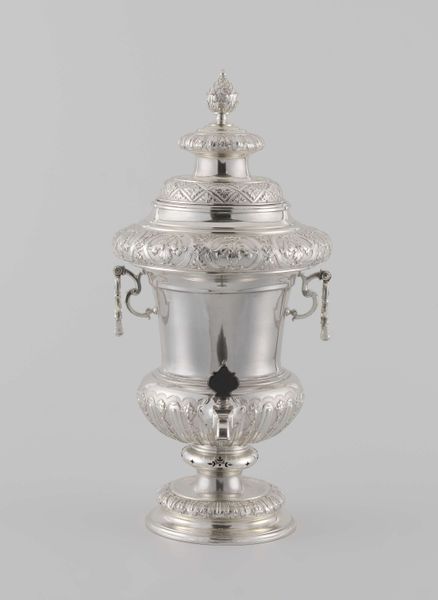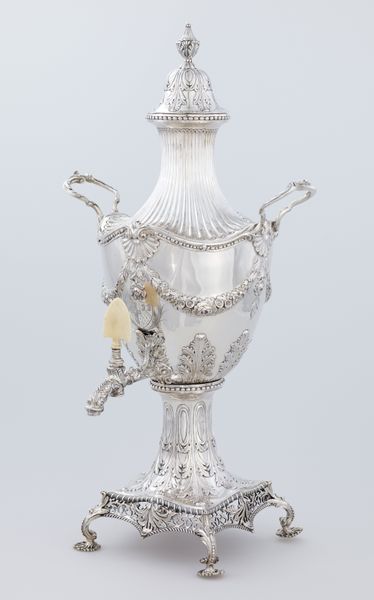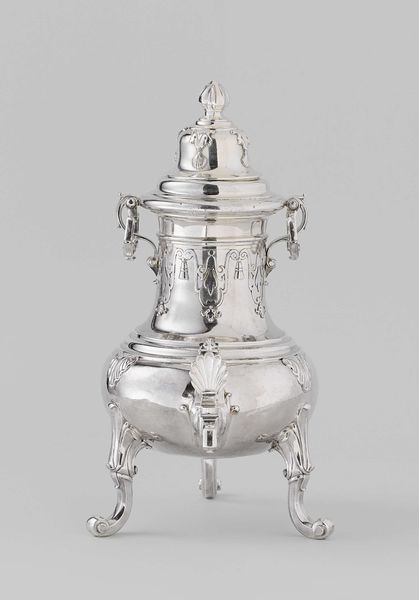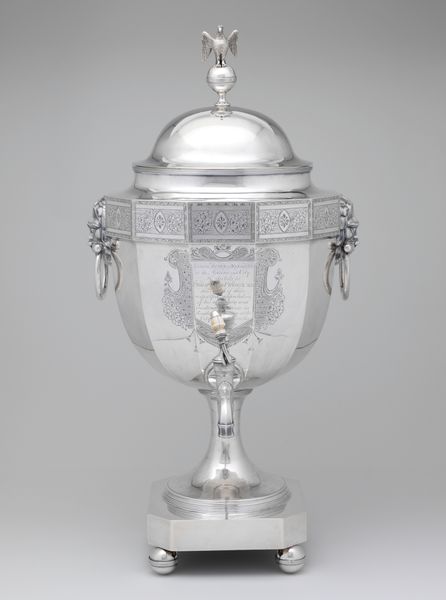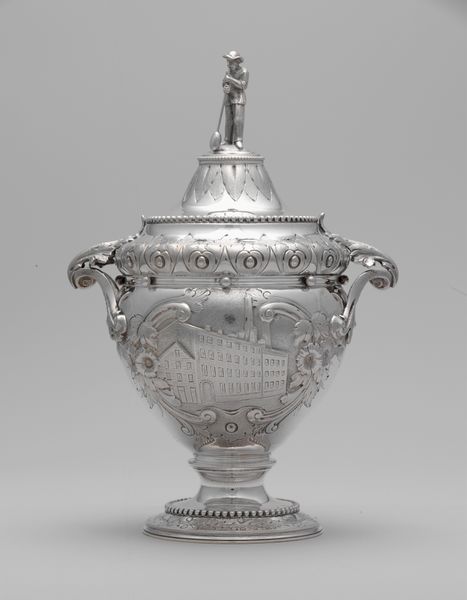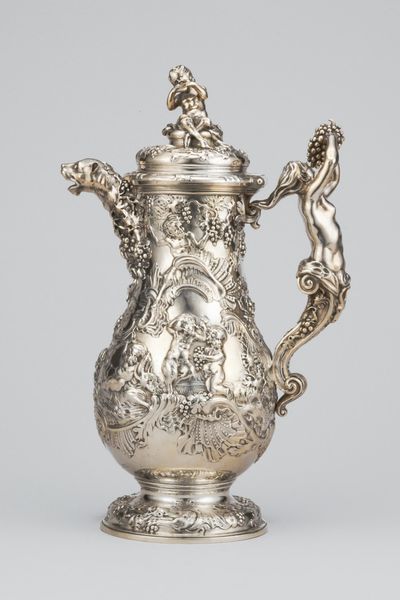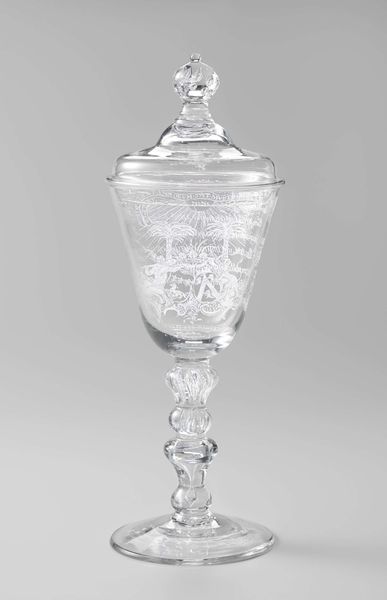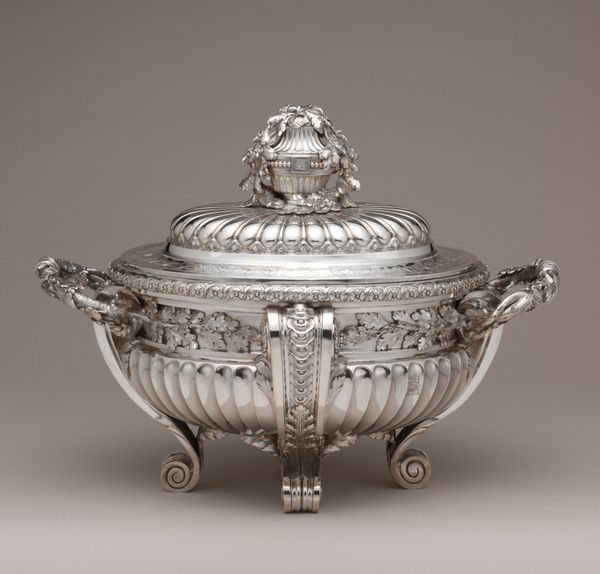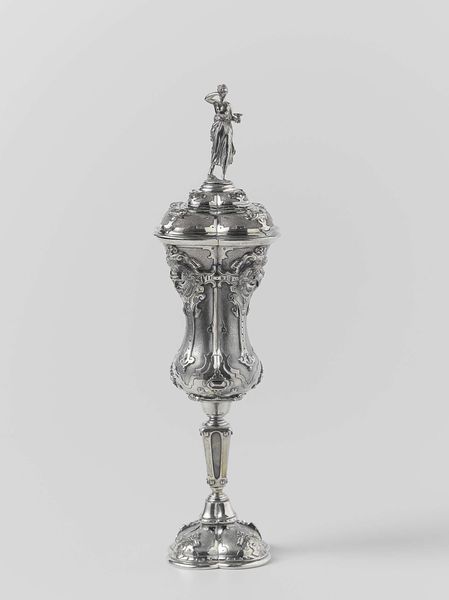
silver, sculpture
#
silver
#
baroque
#
sculpture
#
ceramic
#
decorative-art
Dimensions: height 51.2 cm, diameter 27.2 cm, weight 4900.0 gr
Copyright: Rijks Museum: Open Domain
Editor: We’re looking at the "Wine Fountain and Cooler," crafted from silver around 1731 or 1732. It has an ornate feel with lots of detailing, and because of the material, the surface has these subtle gradations of highlights and shadows. What’s your interpretation of this work, especially considering its formal elements? Curator: Well, focusing purely on form, the most striking feature is its verticality, isn't it? The object ascends in tiers, from the detailed base to the bulbous body, and finally to the ornate lid. This upward movement is intensified by the reflective surface, manipulating light to further elongate the object. It draws the eye upward, commanding attention through height. Editor: Yes, the eye definitely travels upwards. It makes me wonder about the Baroque style... Does the intricate ornamentation serve a function beyond pure decoration? Curator: Indeed. The Baroque style employs elaborate ornamentation, yes, but observe how each flourish and curve contributes to the overall unity. Each element echoes another, reinforcing a cohesive visual experience. Consider the handles, and how their curvilinear form mirrors the body of the piece. Everything here contributes to the object's visual balance and harmony, wouldn't you say? Editor: I see that now; they definitely play off of each other! The curves create unity but almost overwhelm. Do you think the visual harmony, as you describe it, softens some of that ornamentation, almost refining that flamboyance of Baroque? Curator: It's a valid interpretation. If we deconstruct the various levels, the piece conveys verticality through different, though related, visual elements. One may appreciate that approach as quite calculated, rather than an overtly flamboyant outburst typical of the Baroque. Editor: Looking at this fountain through the lens of its formal qualities has shown me the refined control at play in this silverwork. Thanks! Curator: It highlights how form, even in the most seemingly unrestrained styles, can serve to order and organize our visual experience of an object. Thank you for your curiosity.
Comments
rijksmuseum over 2 years ago
⋮
The wine fountain and the cooler, used to rinse one’s hands and wine glasses, formed the decorative centrepiece of a lavish buffet. These were presented to Cornelis Schrijver in gratitude for his heroic naval deeds, alluded to by the reliefs with trophies of arms, fish, shells and sea gods.
Join the conversation
Join millions of artists and users on Artera today and experience the ultimate creative platform.
